This bow comes from a marginal stave, but full of character (or imperfections in other words). It needed some heating and steaming sessions for corrections. Here is the documentation of the process. In the end it is now a fine bow with a lot of character remaining, what makes the tiller looking weird from some angles. But it is well balanced, no twist in the handle while bracing or drawing. It is fumed for a week.
The fades are asymmetric at belly, due they have opposing angles at the back. Belly is flat in the bending parts and follows with valleys the mountains on the back.
The handle is upholstered with cork in portions. Black goat leather and kangaroo lacing makes a comfortable grip. First I had the idea of a horn or bone inlay for arrow pass, but rejected as the fade was very narrow and tolerates no further weakening.
A side splinter at lower fade had to be glued back with epoxi, a hemp wrapping hides that spot. The same on upper fade is just for symmetry aesthetic.
On the tips is an overlay from bone (cow), it is a bit dyed with osage soup & fuming left over.
ntn: 58½”
bh: 5¼”
mass: 569 gram
asymmetrical
max. w.: 1½”
reflex: 2½”
08”: 05,0
10”: 11,3 (+ 6,3)
12”: 16,3 (+ 5,0)
14”: 20,6 (+ 4,3)
16”: 24,8 (+ 4,2)
18”: 28,9 (+ 4,1)
20”: 33,0 (+ 4,1
22”: 37,2 (+ 4,2)
24”: 41,5 (+ 4,3)
26”: 46,0 (+ 4,5)
28”: 50,7 (+ 4,7)
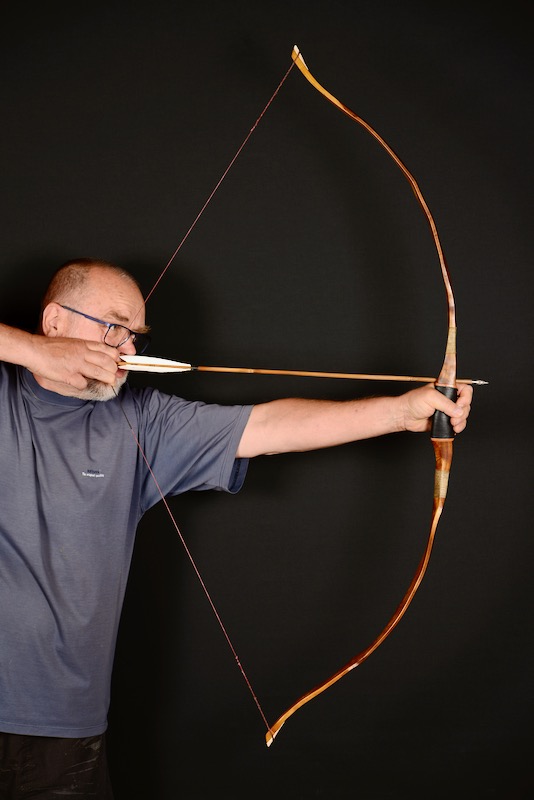




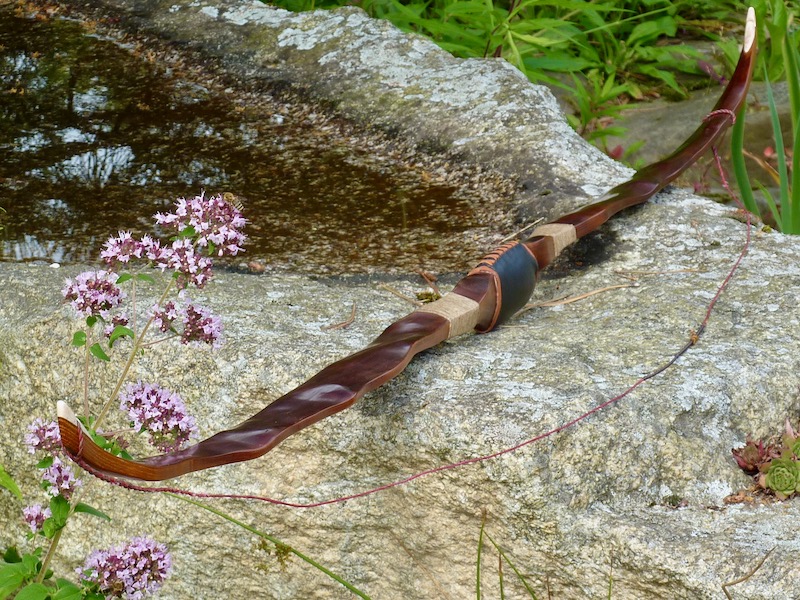
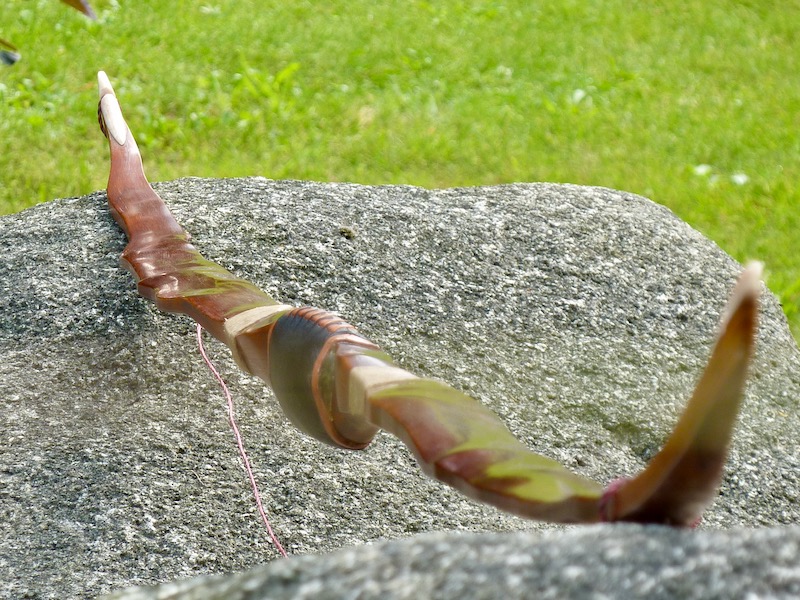
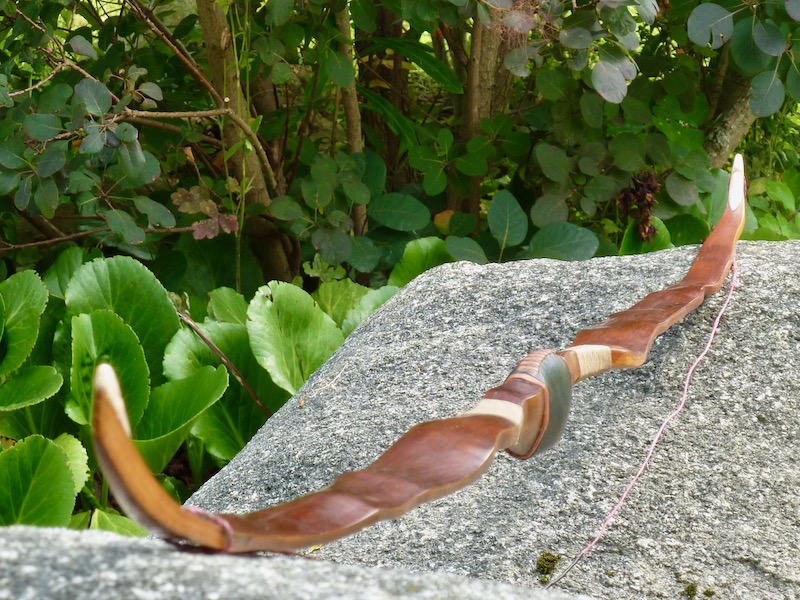
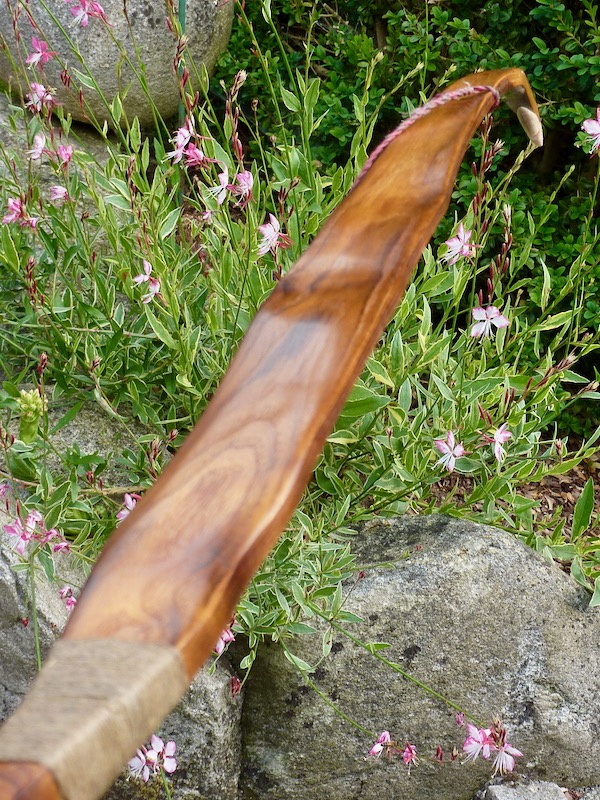
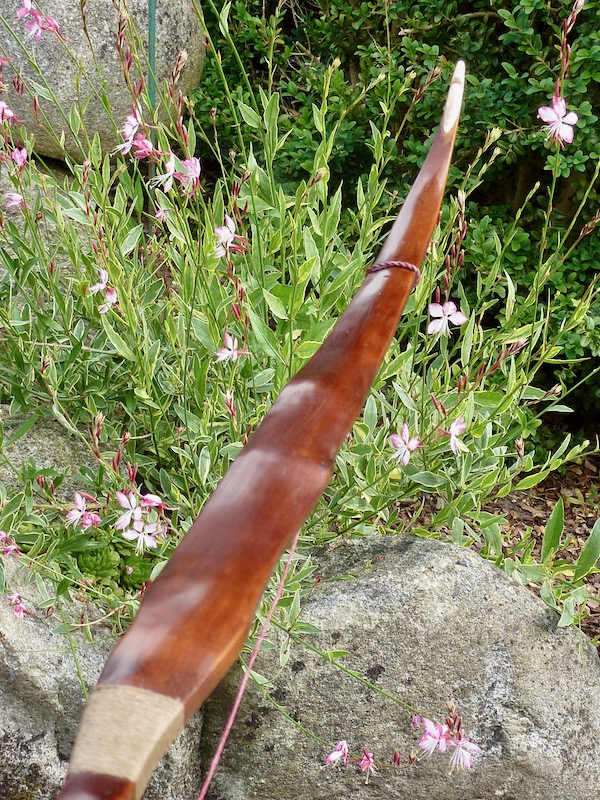
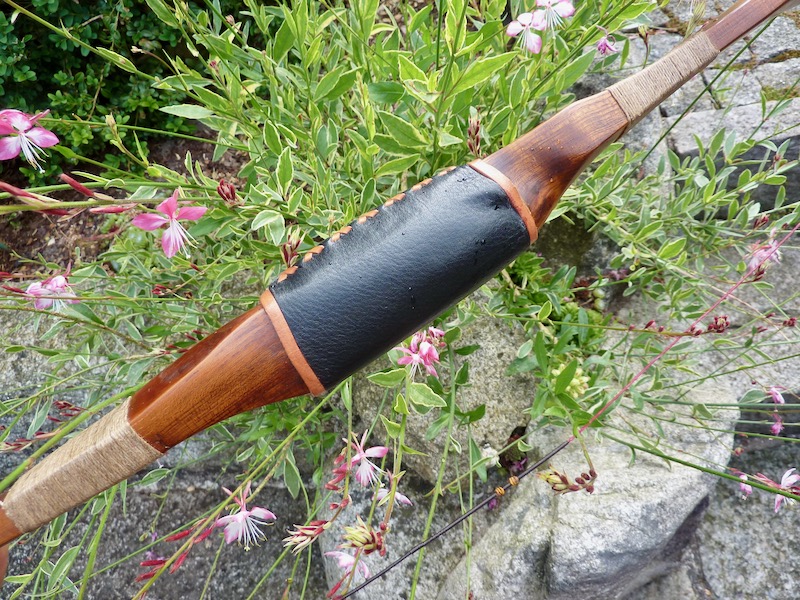
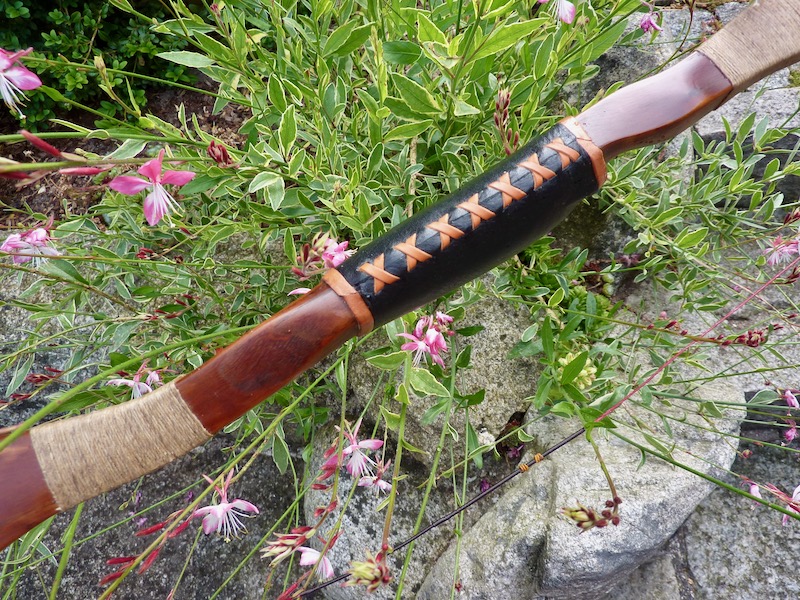
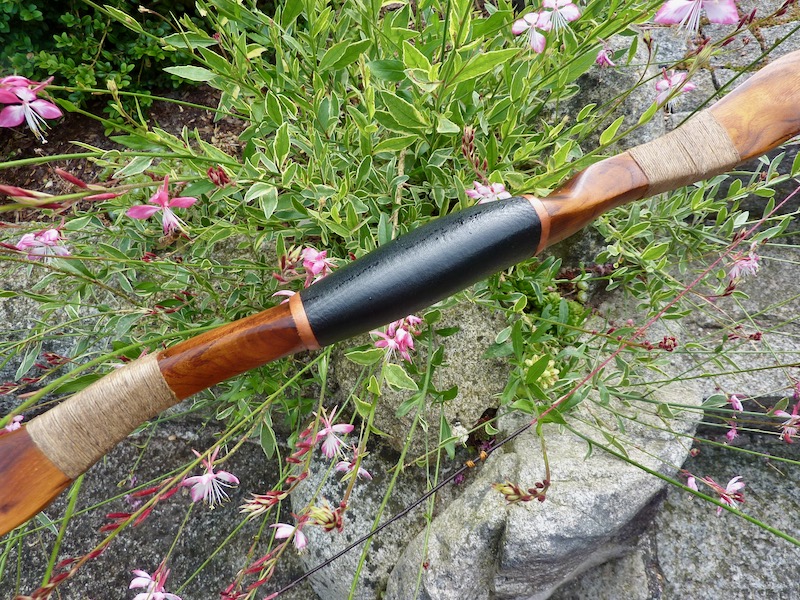
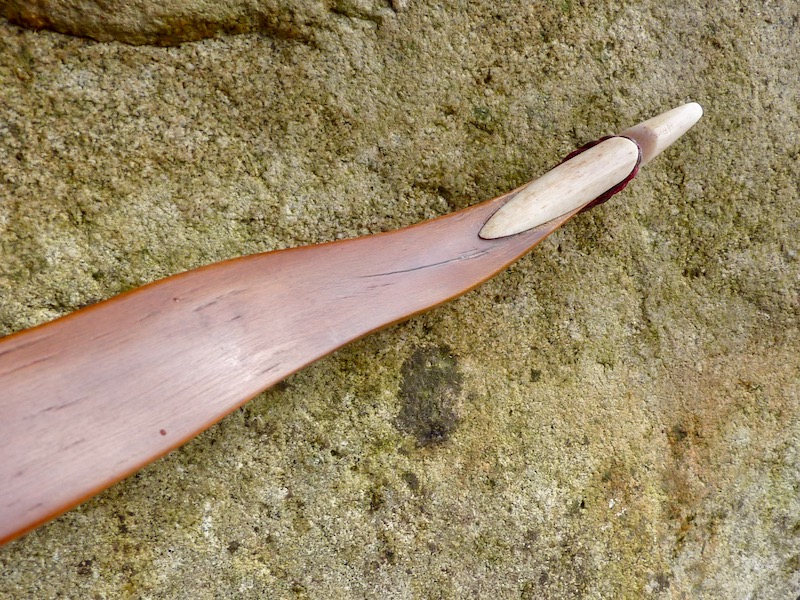
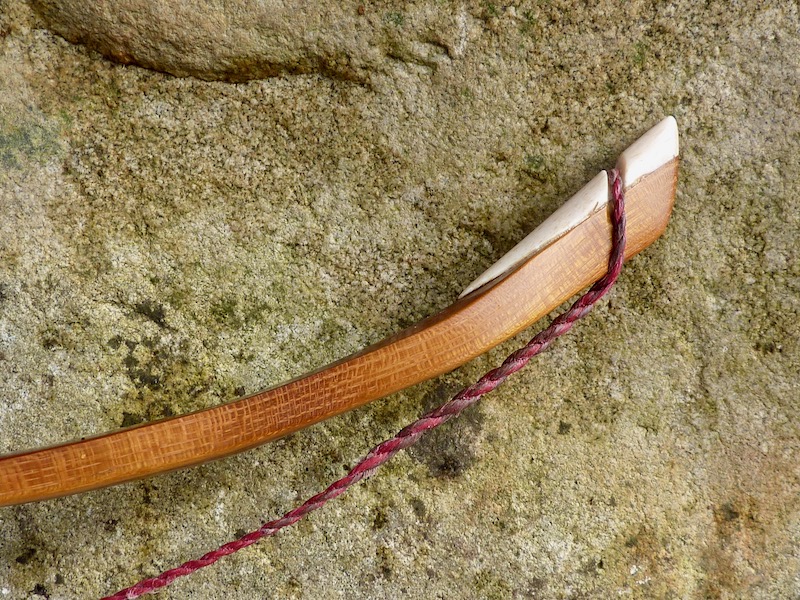
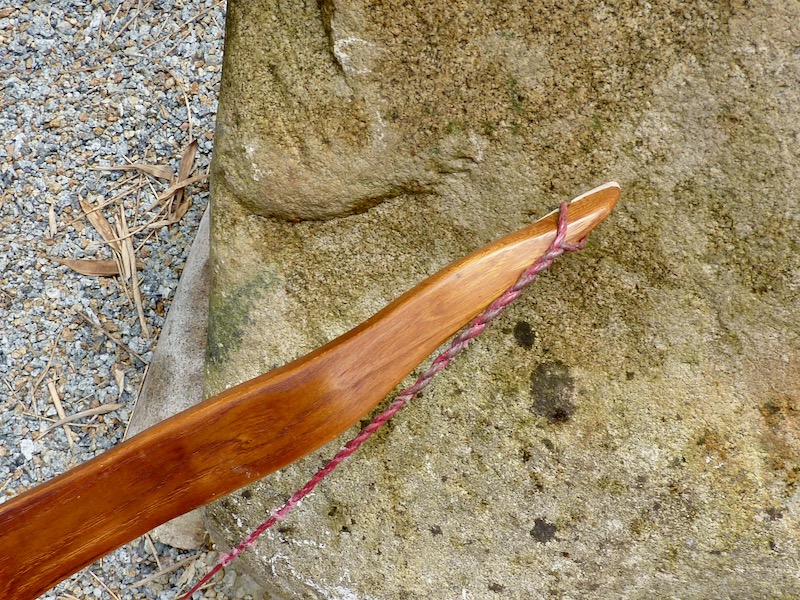
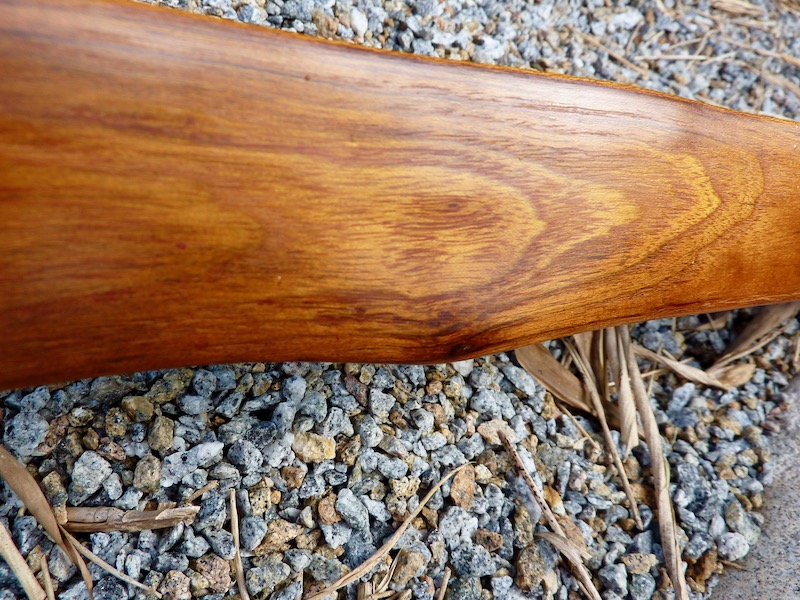
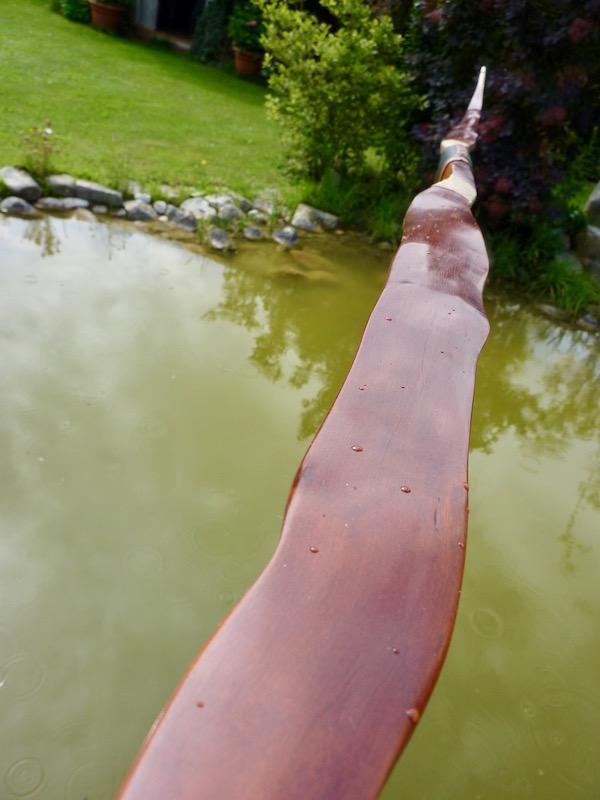
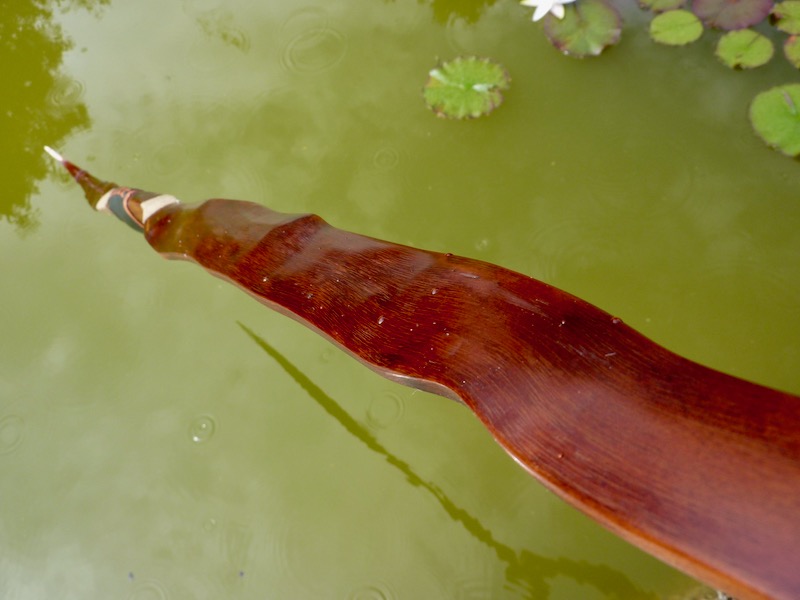
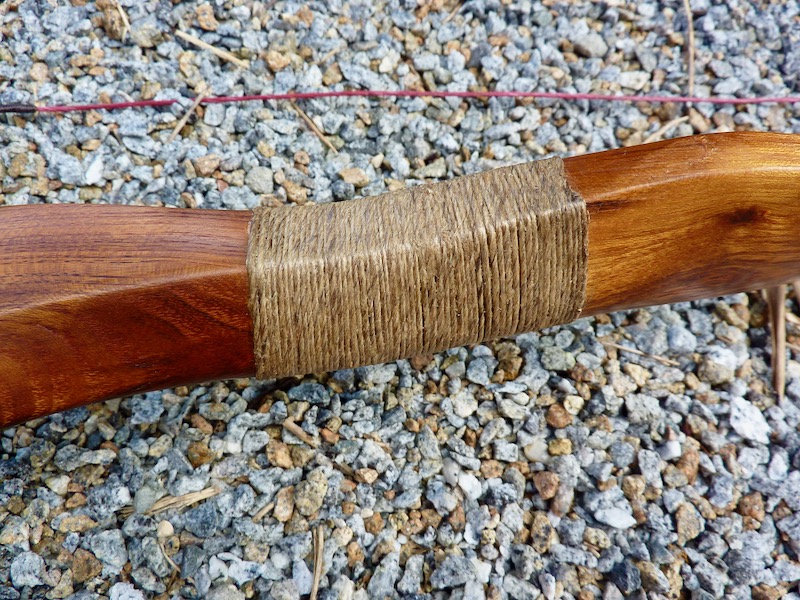
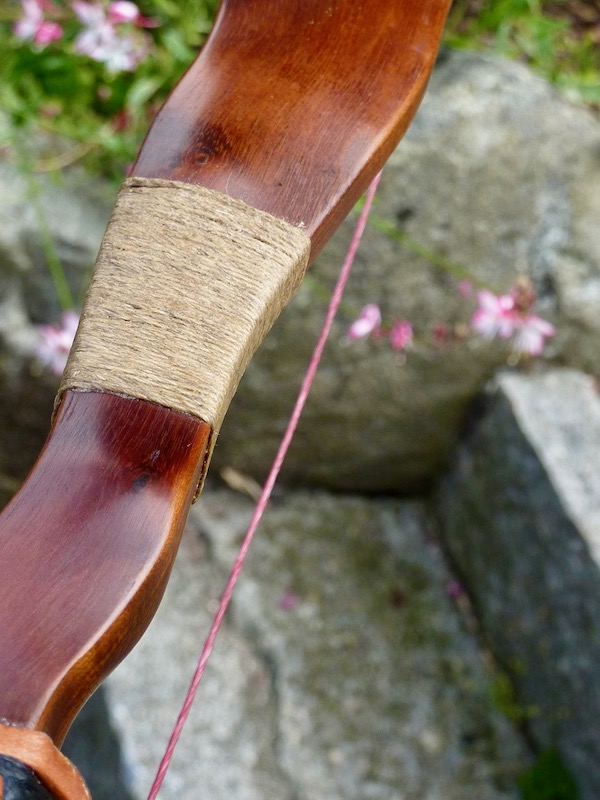

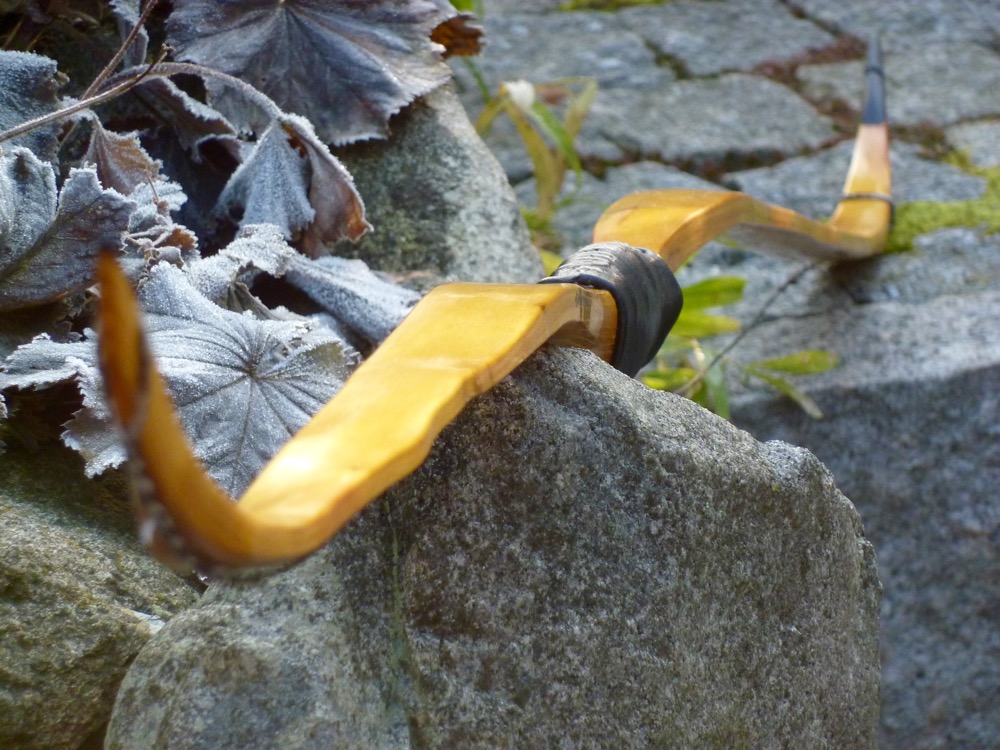
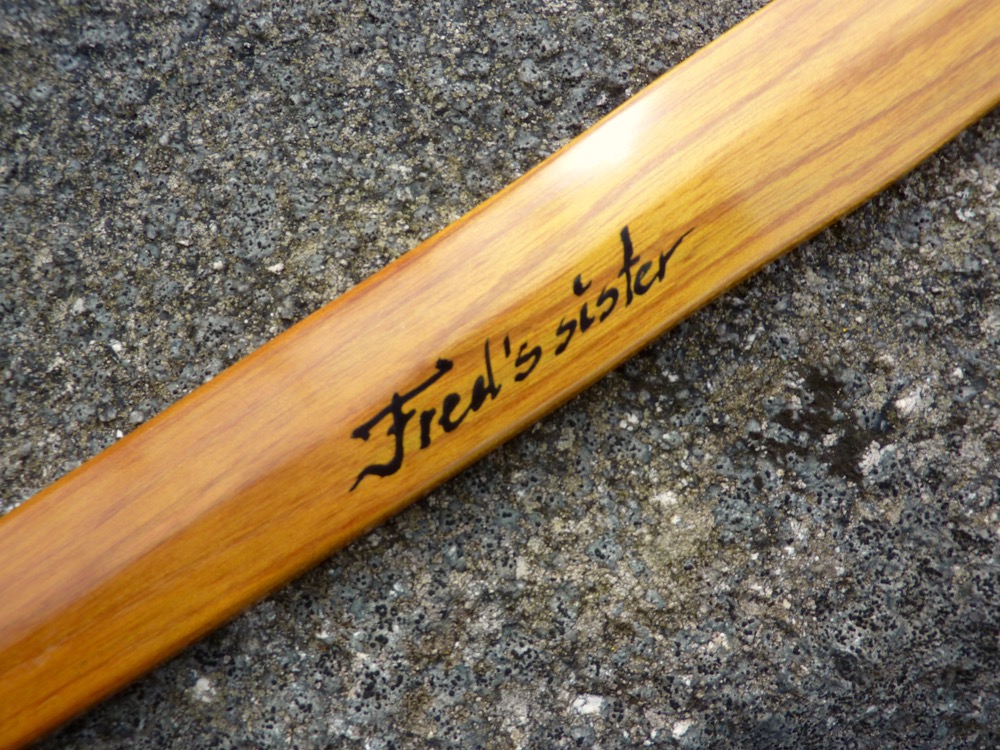
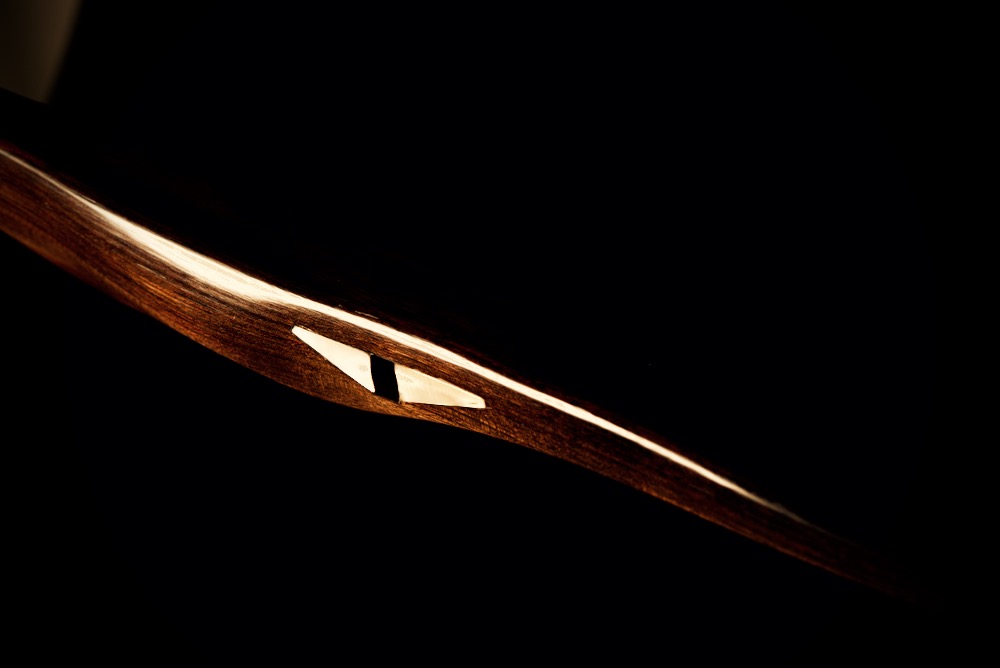
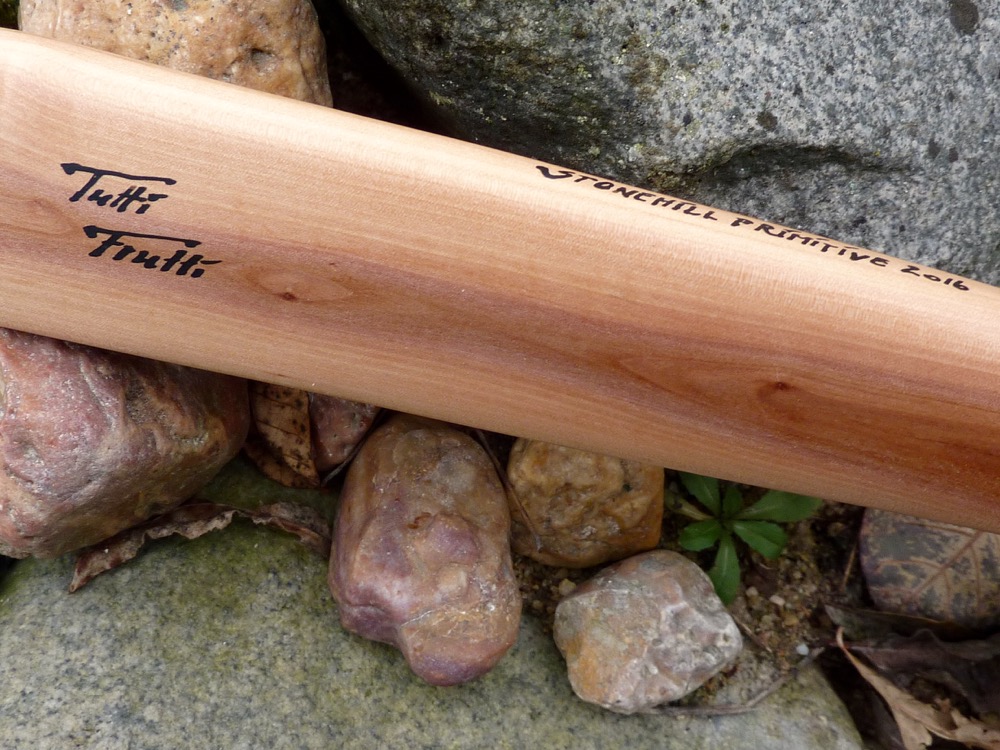
2 Comments
beautiful, original and tree must have been real ugly, ugly means good to me, i’m ojibway which really us odawa. n found we had 4 types of bows different purposes, pyramidish form was 2 one with wide thicker limbs for war bow and war bow dimmed down for hunting. there was a scalloped bow(still trying to figure out purpose). we normally didn’t do things that weren’t functional. first thought was distance thing but a quick reposition of arrow would do that. i though perhaps it’s to move branches out of way silently. my thought at the moment is scalloped bows may have kept draw weight up while keeping strength of bow. also couldn’t you scallop a bow on strong limb to further tiller n tune bow. and if you scalloped on opposite sides one side only and the opposite limb it would produce a stronger bow with less wood. perhaps it helped also helped distribute weight again filleting concept.
if i was to make scalloped bow today the edges would be sharp maybe laminated for close quarter combat.
tough to say as most of native american bows were fasted no eating water, then in vision be shown a tree type and secrets. the man on our island is about 100 years does not speak english so i had a friend translate on how he was given the bow and a tree to use. this is how it was done, by talking bout it or showing never written down except mostly by europeans.
there are things you do when tree is wet juice is smoked low temp and bark smoke n sap water form almost a backing. no not true, it increases the compression strength of the wood when you flip the stave for it to take form in a simple d shape. that is left like that until dry i did in sun but a car is just as good.
fuming them fir years and greasing them make the cellular structure more rigid like belly heat treatment therefore poundage at same draw length increases over time.
if you have any books or good sites for me to look at i would appreciate it .
thank you
matthew
Hi Matthew,
thanks a lot for your long and informative reply. Some things are really new to me and I will try the one or other in future.
Scalloped bows: I have not made yet, but will also try and I’m curious what will come out. So do you think it is more than a nice decorative element? Can you ask your old friend?
Books/links: here on my site are links to very good boyers. I’m sure you know the books of Mason, Jim Hamm & Steve Allely. A good resource are also museums sites.
Best wishes
Simon